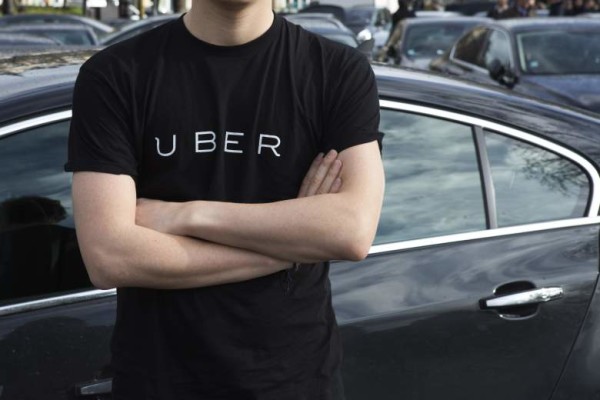
Photo Credit: Ottawa Citizen
2016 was full of bad news, so let’s hope the new year is going to bring more good tidings, particularly for us boomers! Based on some of the developments last year, here are my anticipated top 10 good news for the new year:
- Canada Continues to Be The Shining Light Of the World: Canada graced the October 29 cover and feature story of The Economist magazine last year. The publication said that our nation is uniquely fortunate in many ways – but its liberalism and tolerance hold lessons for other Western countries and went on to explain why Canada is still at ease with openness. Under Justin Trudeau’s leadership, we might not be perfect, but Canada will continue to be a champion of immigration, open trade and the fight against climate change. For 2017, I have to quote retired Global TV journalist, Tom Clark, as he said farewell to his career on December 31, “For all of our troubles, all of our scandals and disagreements, we should try to keep things in perspective. In global terms, our problems are small. Our country works better than most, perhaps better than any other. We should always aim higher. But let’s remember how blessed we really are.”
- Canada officially kicked off our 150th Anniversary of the Confederation on December 31: In addition to a special commemorative 150th Anniversary coin series produced by the Royal Canadian Mint, there will be numerous special celebratory events and festivities in local communities and urban centres across the country throughout the year. Under the umbrella theme of “Diversity, Reconciliation with Indigenous Peoples, the Environment and Youth,” the Department of Canadian Heritage has budgeted $180 million for a variety of initiatives across the country and $20 million for special events such as the New Year’s Eve party on Parliament Hill.. According to a recent government-commissioned poll, nearly nine in 10 respondents expressed a lot of pride in being Canadian, and they felt strongly attached to their country. Nearly the same number said they would visit a national park in 2017 or attend a Canada 150 event. But, as of last summer, few had heard much about what the government was doing to celebrate. Looks like the government has a lot of marketing and promotion work to do on upcoming celebrations.
- From brain drain to brain gain for Canada in a Trump presidency: Canada’s tech firms are hoping Donald Trump will help keep Canadian graduates from skipping town for Silicon Valley and perhaps lure some of the talented expats who have gone south for work. According to CTV News, Canadian companies large and small have quietly bemoaned the exodus of talent for decades, and agencies like Communitech and the City of Toronto have been trying to woo them back. That’s why billboards have been placed on well-travelled Route 101 in Silicon Valley promoting “GoNorthCanada.ca,” a website extolling the values of tech jobs in Ontario. Communitech said that the site has seen spikes since Trump’s victory. “People are reaching out and letting us know they are ready to come home,” said Communitech’s vice-president Heather Galt. With the growth of the Artificial Intelligence (AI) industry and the important research role that Canada has been playing, the nation can further benefit from a brain gain. Last year, Google has announced that it is investing $4.5 million in the Montreal Institute for Learning Algorithms, the latest sign of Google’s growing interest in AI. As part of the deal, Google will open an AI research group in Montreal. The company believes the city has the potential to become a “super-cluster” of machine learning knowledge. Some large companies have also recently moved their AI divisions to Toronto, including Thomson Reuters and General Motors, with the intention of hiring hundreds of data scientists. According to The Globe and Mail, many of Canada’s largest companies have also stated a desire to hire thousands more data scientists in the coming years. Demand for talent already outstrips supply, and the gap will only grow. Now is the opportune time for Canadian AI companies to spread their recruitment net wider to include the U.S. so that we can benefit from a larger pool of AI research talents.
- The Paris climate change agreement was signed by 194 countries and ratified by 121 members, including the U.S. and China, by the end of last year: In spite of what Donald Trump said, it would not be easy for him to repeal this accord. With the enforcement of this agreement, nearly 200 governments will become obliged to meet emissions-cutting pledges made before the deal. The agreement would also commit the countries to aspire to keep temperatures below 1.5C above pre-industrial levels. The agreement went into effect on November 4, 2016, which means that 2017 will see a lot of countries starting to move in the direction of reducing greenhouse gases. In Canada, Prime Minister Trudeau and most of the premiers (except for Saskatchewan and Manitoba) signed a historic pan-Canadian framework last month to fight climate change and meet the country’s 2030 emissions reduction targets.
- Self-Driving cars from science fiction to science fact: after the first series of successful pilot-tests of self-driving vehicles in both the U.S. and Canada last year, these autonomous cars will hit the street in larger numbers in 2017. Last month, Alphabet, the owners of Google, spun off the research and development of self-driving technology into a separate company with the name of Waymo. The company has partnered with Chrysler to develop self-driving Pacific Hybrid minivans. Test units will hit the road over the next several months. According to technology news website Dice.com, expect Uber and Tesla to speed up with making their autonomous-driving offerings as advanced as possible in 2017. This development will drastically improve the quality of lives for aging populations across North America.
- On the health front, 2017 will be a breakthrough year for the fight against Ebola. An Ebola vaccine developed by Canadian researchers and considered by the World Health Organization (WHO) to be the first effective treatment against the virus has already started a new phase of clinical trials. The vaccine’s safety and effectiveness were tested on volunteers infected with HIV, starting in Ottawa and Montreal last November, and followed by trials in the new year in Senegal and Burkina Faso. According to the principal investigator Cecile Tremblay, “It is particularly important to study the effectiveness of this Ebola vaccine in vulnerable populations, such as those living with HIV. These populations can often be most at-risk during outbreaks, because of their compromised immune systems.” The Ebola vaccine, originally developed by the Public Health Agency of Canada, provided blanket protection in a field trial in Guinea in 2015. Health Minister Jane Philpott said that the next phase of clinical trials in 2017 is an important milestone in the development of the world’s first proven, effective vaccine against the Ebola virus.
- A revolutionary blood test that can detect cancer can become part of an annual physical in five years. Liquid biopsies, as the blood tests are known, can give physicians a telltale sign of the presence of the disease in almost all types of cancer mutations. For cancer patients undergoing treatment, liquid biopsies could spare them some of the painful, expensive and risky tissue tumor biopsies and reduce reliance on CT scans, which must be limited because of the danger posed by overexposure to radiation. Medical experts say that the liquid biopsy has come a long way in the past year and a half. According to CNBC, doctors and medical researchers are excited by the prospect that liquid biopsies would be a way to help people already fighting the disease. The new year will bring even more research and development in cancer centres across the U.S. on how a non-invasive blood test could be appropriate in many cases to identify the DNA mutation driving cancer forward.
- New eye drops can dissolve cataracts with no need for surgery. We’ve all read about a new study that used eye drops to shrink cataracts in dogs may have made an important step in overcoming them. According to Professor Kang Zhang, from the University of California San Diego, whose research team developed the eye drops, this new drug could play an important role in the prevention of cataracts in those showing early signs. Although at this stage eye drops have the potential to overcome a number of limitations of surgery, they won’t be able to replace it yet. According to Dr. Manuel Datiles, a senior investigator and attending ophthalmologist at the U.S. National Eye Institute in the National Institutes of Health, eye drops will become key in treating cataracts, as surgery will not be able to cope with the growing needs of the world’s aging population. The new year will also bring more research and development to investigate whether there can be more medical breakthroughs in this area.
- On the arts and culture front, we could not have asked for a better year than 2017 when Canadian musicians took the Grammy nominations by storm and two Canuck male lead actors were nominated for the Golden Globe Awards. After a year of Canadian dominance on the international music scene, Drake, Justin Bieber and The Weeknd were nominated for many categories in the 2017 Grammy Awards. Drake leads with a whopping eight nominations while Bieber fares well with four. Other Canucks on the list include R&B singer Tory Lanez, Vancouver-formed and now Brooklyn-based duo Bob Moses, jazz musician and composer Darcy James Argue’s Secret Society, Toronto-based record producer Nineteen85, and the renowned classical music conductor Yannick Nezet-Seguin in the Best Opera Recording category. We all look forward to awards night on February 12 when we will see how much hardware these artists will bring home! On the big screen, two Canucks will go head-to-head in the best actor category for a musical or comedy. Ryan Gosling, from London, Ontario, was nominated for his lead role in La La Land while Vancouver-native Ryan Reynolds is also up for his comedic performance in Deadpool. (Gosling eventually took home the Golden Globe and will, almost for sure, be nominated for a Best Actor Oscar!)
- Canada tops The New York Times‘s 52 Places To Go in 2017. On January 4, The New York Times put Canada number one on its annual list of places to go in the new year. According to the publication, Canada has it all – from cosmopolitan cities to barely explored natural wonders and everything in between. It also mentioned that all of the country’s more than 200 national parks and historic sites are offering free admission through our 150th Anniversary year, “from the turquoise lakes and mountain peaks of Banff in Alberta to the rolling dunes and red sandstone cliffs of Prince Edward Island along the Atlantic Coast to the newest reserve, the glacial-rounded Mealy Mountains in Labrador.” Looks like Tourism Canada did a better job in marketing our country as a travel destination to our neighbours down south than to fellow Canadians!
With all these good news, let’s move forward into the future with more positive thinking and cast away all the bad news of 2016. A new year is always a new beginning with new hope!










